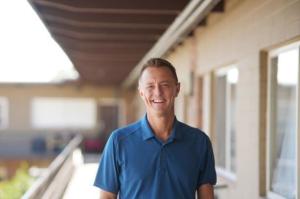Archaeological Discovery: Huge Block Once Containing the Remains of Peter, Philip and Andrew Found?

A reliquary that once could have held the remains of the apostles Philip, Andrew and Peter, has been discovered in the ruins of what may be the ancient Israeli city of Bethsaida, a top archaeologist has said.
Professor Mordechai Aviam of the Kinneret Academic College revealed that a 661-pound basalt block, with three smooth compartments on top, was found in the biblical town, also known as el-Araj, according to Haaretz.
"We suggest, cautiously, that this could be the reliquary of Peter, Philip and Andrew. This could have been the reliquary of the Church of the Apostle," he said.
The town is mentioned in John 1:44 in the Bible as the hometown of Philip, Andrew, and Peter.
Aviam admitted that it cannot yet be known for sure whether el-Araj is indeed ancient Bethsaida, but argued that it is a better candidate than other sites that have been proposed, which are being explored by other researchers making a case for them.
Archaeologists had been digging through the ruins of a church that had once stood in the town, but the reliquary was apparently found by accident.
"We didn't find it in the excavation," Aviam said. "It was found in the debris of an Ottoman-era, two-story house built by a rich man from Damascus, who owned all the land locally in the late 19th century. His full name was Abdul Rahman Pasha al-Yusuf and he was called 'the Bek' – hence the town's soubriquet of 'Beit Habek.'"
The reliquary is believed to have been placed on the floor below the church altar, as the bottom of the stone was rough and not carved like the top. In Byzantine churches, reliquaries that contain sacred relics are positioned in such a way.
Aviam spoke about an eighth century Byzantine pilgrim named St. Willibald who traveled and wrote about the area around the Sea of Galilee, mentioning both the Church of the Apostles and Bethsaida.
"Then they went to Bethsaida, the native place of Peter and Andrew. A church now occupies the site where their home once stood," Willibald wrote.
Aviam explained that what this means is that in those days, the area of el-Araj was believed to be Bethsaida.
"Willibald only mentioned the church of two apostles, Philip and Andrew: he didn't mention Peter [in that context]. I still feel it was the church of three apostles," the archaeologist said, noting the three depressions in the basalt rock.
Aviam further argued that el-Araj stood from the first century B.C. to the fourth century.
"The entire assemblage allows us to securely propose this as the location of the village of Bethsaida," he added. It is "a fishermen's village on the shore of Lake Kinneret, which during the first century expanded and became an urban settlement, to which the bathhouse belongs that is now being exposed in the excavation."
The Roman-style bathhouse is a previous discovery revealed in August 2017 that led researchers to believe that they have found Bethsaida.
Kinneret College said in a statement that the remains of a Byzantine church there may have been established on the former site where the apostles used to live.



























